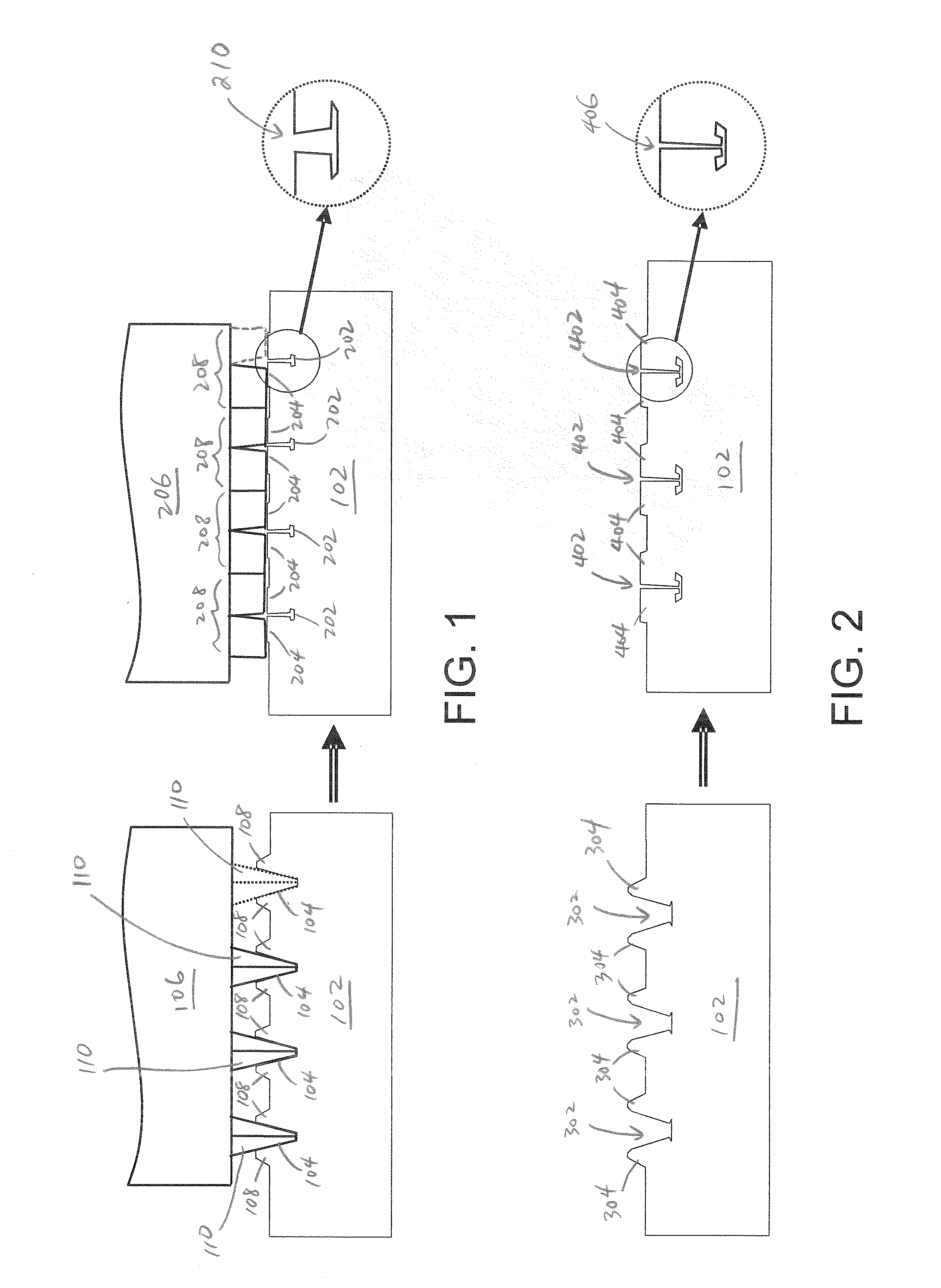Microgrooves as Wick Structures in Heat Pipes and Method for Fabricating the Same
a technology of microgrooves and heat pipes, which is applied in the field of microgrooves, can solve the problems of large groove size (about >0.35 mm wide), high manufacturing cost, and inability to meet the requirements of the customer, and achieve the effect of increasing capillary for
- Summary
- Abstract
- Description
- Claims
- Application Information
AI Technical Summary
Benefits of technology
Problems solved by technology
Method used
Image
Examples
Embodiment Construction
[0019]It is well known that narrow grooves provide large capillary force and therefore large working angle for heat pipes. Grooves of various shapes in current heat pipes are typically formed by extrusion and are generally greater than 0.3 mm wide. The microgrooves in accordance with the invention are mini / micro-scaled grooves that are less than 0.2 mm wide. The two sequential steps in accordance with the invention may be the only available approach for mass producing grooves of this scale at present time. The principle is as simple as a farmer plowing a trench in the soil and then reburying the trench after seeds are planted. To accomplish the process, two blades are used. A first blade of first multi-plowshares is used in the first step to turn up material on a metal plate or strip to form large grooves, and then a second blade with second multi-plowshares is used in the second step to rebury the large size grooves with the material turned up in the first step to form microgrooves...
PUM
| Property | Measurement | Unit |
|---|---|---|
| width | aaaaa | aaaaa |
| size | aaaaa | aaaaa |
| width | aaaaa | aaaaa |
Abstract
Description
Claims
Application Information
 Login to View More
Login to View More - R&D
- Intellectual Property
- Life Sciences
- Materials
- Tech Scout
- Unparalleled Data Quality
- Higher Quality Content
- 60% Fewer Hallucinations
Browse by: Latest US Patents, China's latest patents, Technical Efficacy Thesaurus, Application Domain, Technology Topic, Popular Technical Reports.
© 2025 PatSnap. All rights reserved.Legal|Privacy policy|Modern Slavery Act Transparency Statement|Sitemap|About US| Contact US: help@patsnap.com



